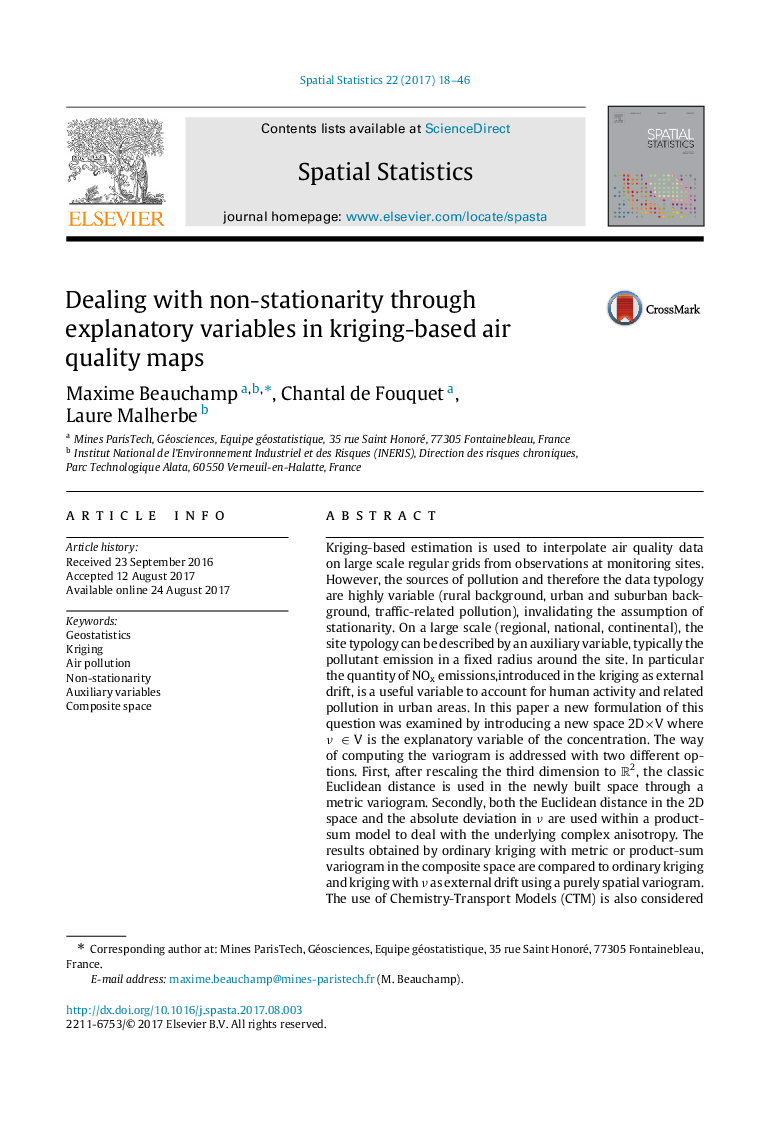| کد مقاله | کد نشریه | سال انتشار | مقاله انگلیسی | نسخه تمام متن |
|---|---|---|---|---|
| 5118965 | 1485780 | 2017 | 29 صفحه PDF | دانلود رایگان |
Kriging-based estimation is used to interpolate air quality data on large scale regular grids from observations at monitoring sites. However, the sources of pollution and therefore the data typology are highly variable (rural background, urban and suburban background, traffic-related pollution), invalidating the assumption of stationarity. On a large scale (regional, national, continental), the site typology can be described by an auxiliary variable, typically the pollutant emission in a fixed radius around the site. In particular the quantity of NOx emissions,introduced in the kriging as external drift, is a useful variable to account for human activity and related pollution in urban areas. In this paper a new formulation of this question was examined by introducing a new space 2DÃV where νâ V is the explanatory variable of the concentration. The way of computing the variogram is addressed with two different options. First, after rescaling the third dimension to R2, the classic Euclidean distance is used in the newly built space through a metric variogram. Secondly, both the Euclidean distance in the 2D space and the absolute deviation in ν are used within a product-sum model to deal with the underlying complex anisotropy. The results obtained by ordinary kriging with metric or product-sum variogram in the composite space are compared to ordinary kriging and kriging with ν as external drift using a purely spatial variogram. The use of Chemistry-Transport Models (CTM) is also considered as a potential improvement is also approached and the way of introducing this type of data in the kriging is discussed. Finally, in the light of the results provided by this set of estimators applied to NO2 datasets, kriging with external drift in the 2D space remains the most convenient way on average to deal with non-stationarity and to include all the explanatory informations in the estimator. Nevertheless, the product-sum variogram model used in the composite space 2DÃV sometimes exhibits a better performance for some data configurations, suggesting that there is no single best method to account for non-stationarity in air quality processes.
Journal: Spatial Statistics - Volume 22, Part 1, November 2017, Pages 18-46
